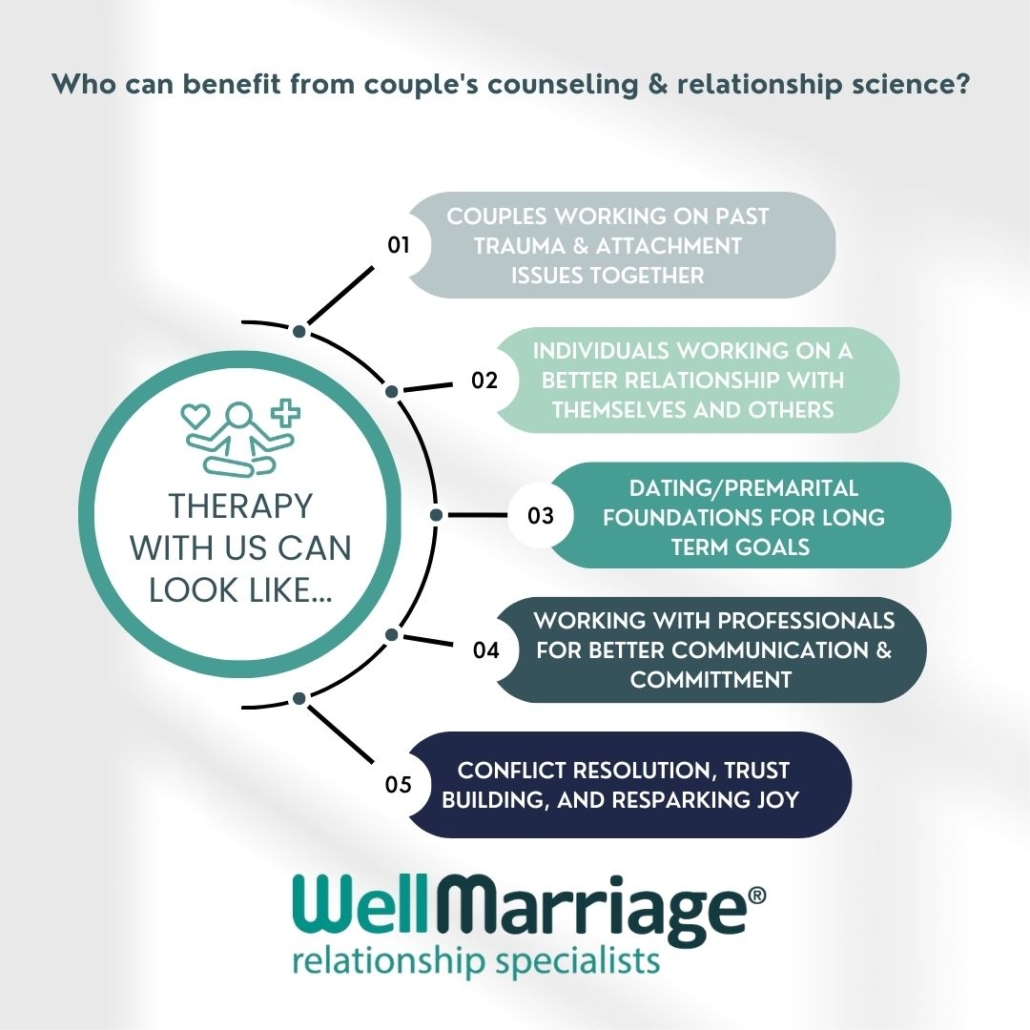Examine This Report about Aim Point Counseling
Wiki Article
About Aim Point Counseling
Table of ContentsSome Of Aim Point Counseling10 Simple Techniques For Aim Point CounselingAim Point Counseling Fundamentals ExplainedNot known Details About Aim Point Counseling Not known Facts About Aim Point CounselingNot known Facts About Aim Point Counseling
The longitudinal design includes a pre-treatment survey and two follow-up surveys at 3- and 12-months post-intervention. The study is set in eight Relationships Australia Victoria centres, throughout metropolitan, outer suburbs, and regional/rural sites. Relationships Australia, a non-government organisation, is the largest supplier of pair therapy and partnership solutions in Australia.
These high prices of partnership breakdown have been regularly associated with negative health consequences for both grownups and youngsters adhering to divorce/separation.
Not known Facts About Aim Point Counseling
The effects of separation and splitting up can be detrimental, research suggests that high partnership disharmony in undamaged pairs is also likely to have negative end results.Study to date has actually determined both couple and specific aspects that may add to partnership dissonance. These consist of relationship fulfillment and commitment at the couple level, and clinical depression at the specific level.
3 Easy Facts About Aim Point Counseling Explained
Connection complete satisfaction has been one of the most usual result variable recognized in greater than 200 assessments of pair counselling [11,12] Research studies have found substantial enhancements in partnership satisfaction from pre- to post-treatment [13,14] and over the course of one to 2 years adhering to therapy [15] In these researches, relationship contentment was most frequently examined making use of the Dyadic Modification Scale (DAS) [16] Therefore, while the majority of research studies show enhancements in partnership complete satisfaction following couple coaching, they are limited by the examples and steps utilized, mainly short-term follow-up timespan, and analyses that do not account for the dyadic nature of couple information. Partnership commitment, based upon steps such as the Commitment Inventory (CI) [19], is one more typically explored partnership outcome.To sum up, research study indicates that couple-specific variables as well as private aspects might predict the outcomes of pair counselling and partnership solutions. The causal direction of these relationships, nonetheless, is less clear. These observations are very important, since, to warrant and assist the application of relationship services such as couple therapy, empirical evidence has to check out both the results of relationship solutions and the elements that forecast effective therapy.
, at the very least in some European nations.

We presently know little regarding the accounts of couples who look for out partnership education and learning compared to those who seek partnership therapy, or the end results of these programs. Anecdotal evidence recommends that there may be considerable distress among at least some couples seeking partnership education. Relationship education programs vary from pair counselling as they are commonly very structured, carried out in teams, and concentrate on a combination of 4 elements; awareness, comments, cognitive modification, and abilities training [45]
Some Known Details About Aim Point Counseling
Feedback includes participants finishing sets of questions about their relationship (e.g. steps of interpersonal troubles), and obtaining info on what their ratings indicate. Cognitive-behavioural approaches advertise altering cognitions to assist in positive relationships. These might consist of promoting realistic attributions/expectations around unfavorable partner behaviour [46] In skills training, pairs go to lectures or presentations on relationship skills, and practice these during facilitator-led tasks [ 45]These effects have persisted for as much as 4 years in some studies [47] Nevertheless, these meta-analyses highlight limitations in the present literary works on connection education and learning. Especially, the majority of research studies involved couples from top socio-economic histories that were not experiencing high relationship discord [47,48] This example profile may not stand for customers that generally provide for partnership education and learning.
The Buzz on Aim Point Counseling

Very little research study has examined the comparative advantages of pair coaching and connection education and learning programs. As clients are likely to self-select into these solution types, it is unclear whether characteristic connection distress profiles present to every solution kind, or undoubtedly whether there is a communication between providing account, solution kind and end result.
(https://www.slideshare.net/toddrashid01)
Therefore, we have included a 12-month follow-up to evaluate longer-term fads and effects.
For that reason, we suggest to make use of multi-level analytical modelling treatments that regulate for the inter-dependence of couple information to analyze any type of therapy results. The particular goals of the ECC research are to: 1. Map accounts of clients seeking neighborhood agency-based couple counselling vs. connection enhancement programs in regards to socio-demographic and partnership signs (such as partnership contentment, partnership dedication, social problems, and factors for going to), in addition to health and wellness (such as depression, basic wellbeing) and wellness solution usage (eg.
2. Establish whether pair coaching and partnership education services boost 3- and twelve-month end results for partnership complete satisfaction, commitment, and depression, making use of analytical analyses suitable to combine data. 3. Determine the loved one payments of client check my source variables (specific and pair) and therapy/education variables to end results at 3- and 12-months, and to sustainability of end results gradually.
Some Ideas on Aim Point Counseling You Should Know
Multi-level modelling to identify pre-post distinctions, managing for dyadic (pair) level. To add to the literary works evaluating the performance of community-based pair therapy.Report this wiki page